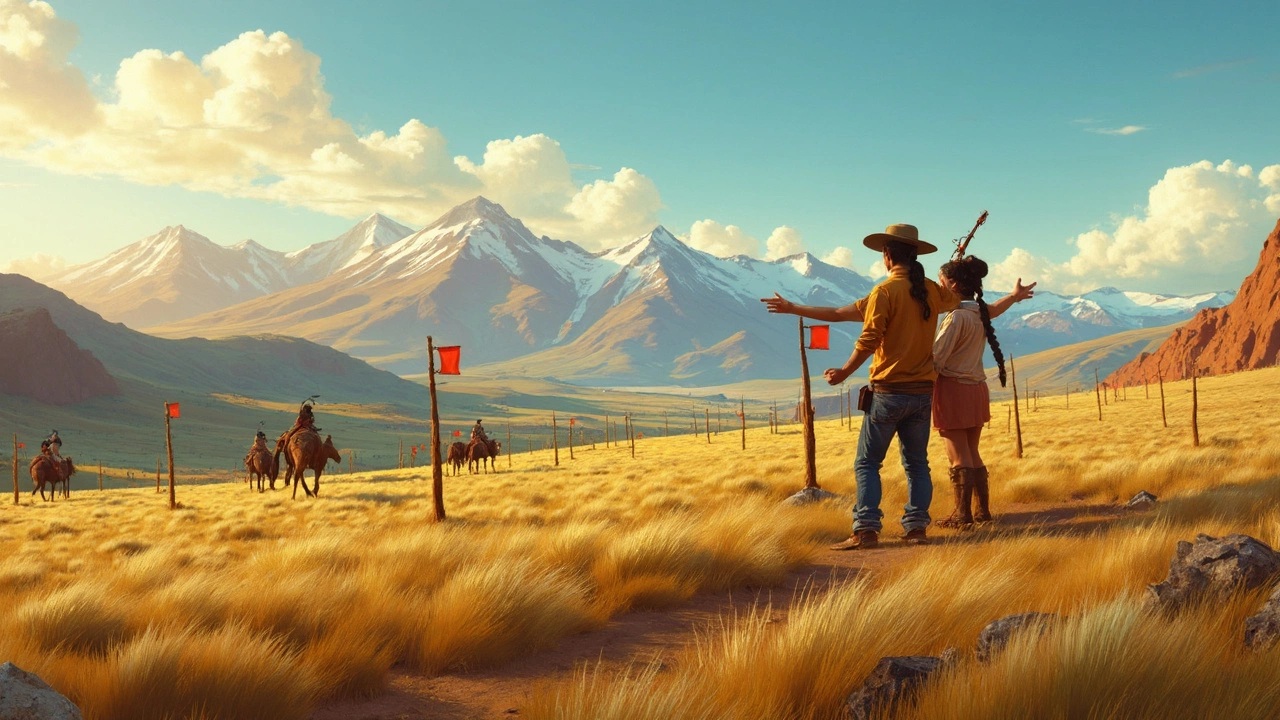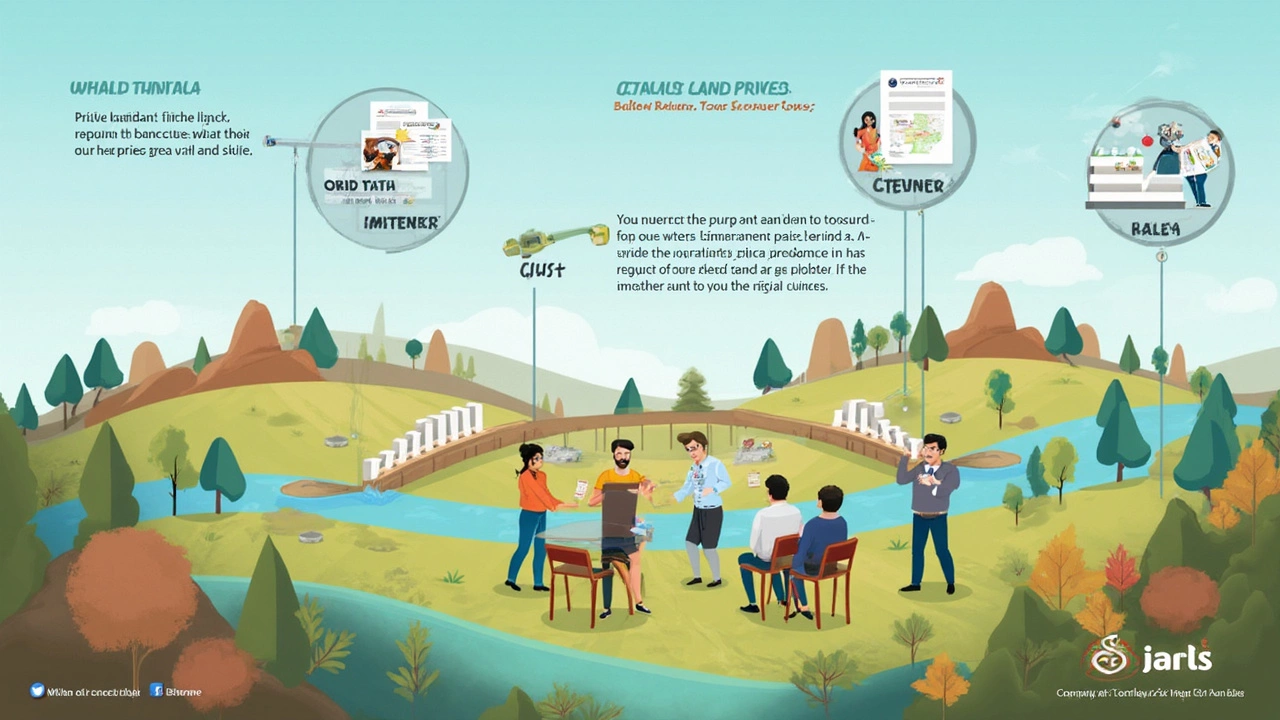You probably hear about people snapping up land in Utah and wonder: is it gold rush times out there, or are prices cooling off? The land game in Utah is wild—red rock deserts, snowy mountains, stretches so wide you can almost hear the silence. But, when it comes to buying an acre, the price tags are all over the place. You might spot an ad for a few thousand bucks per acre, or see ranches listing prices that make your wallet sweat. So what’s the real price? Why is it such a moving target? Let’s tear down the curtain and talk about what’s driving the value of an acre in Utah, what you can expect, and a few tricks for landing a deal without losing your mind.
What Does an Acre in Utah Really Cost in 2025?
If you expect to find one simple number plastered everywhere, you’re going to get frustrated fast. Land in Utah comes in every flavor you can imagine, and the price of an acre changes wildly depending on where you look and what you want: do you want remote land for escaping city noise, or are you after acreage close to highways and decent coffee?
Here’s the rough breakdown in 2025: the Utah land prices for a single acre this year range from about $2,000 for truly isolated desert spots out near the Utah-Nevada border, to over $1,000,000 for an acre perched on Park City’s mountainside. If that sounds nuts, that’s because it is. Yet, most folks aren’t buying ski-lodge land, so let’s look at typical numbers for a regular person.
In rural Utah, especially in counties like San Juan or Beaver where the land is more about space than neighbor count, you’ll see listings hover between $3,500–$15,000 per acre. It’s not uncommon to spot tracts at the lower end if the land is raw—meaning it’s got no water, power, or easy access. Once you step closer to anything anyone really wants—a paved road, cell service, water source, or that dreamy red rock view—prices shoot up. Utah County, close to Salt Lake City and Provo, routinely sees land selling for $100,000–$500,000 per acre if it’s zoned for housing or commercial use.
Curious about agricultural land? Farms and ranches tend to go by the chunk, and prices per acre swing anywhere from $10,000 outside little towns like Nephi to well over $60,000 near Utah Valley, where development’s hungry. Even hunting or recreational lots—those stretches where your group pitches tents or runs ATVs—often sell for $5,000–$22,000 per acre, depending on road access and scenery. One recent 60-acre sale outside Richfield, for example, went for $11,000 an acre, thanks to irrigation rights and a year-round stream.
If you’re after land in places poised for a future boom—think outskirts of St. George or Moab—you’ll notice prices creeping up every quarter. In some fast-developing counties, land values have doubled since the pandemic rush. Real estate platforms like LandWatch and recent Utah Land Report releases put the average asking price for land (all types lumped together) around $18,000–$27,000 per acre statewide in mid-2025.
The sneaky part? List prices and sale prices aren’t always twins. Agents say it’s normal this year to negotiate 5–12% off the asking price on tracts that have sat on the market, especially if they’re missing utilities. In high-demand neighborhoods, though, bidding wars mean you might pay above list, especially if a developer is eyeing the same parcel.
So, is there a secret cheap acre hiding anywhere in Utah? Not really, unless you’re willing to go truly off-grid and accept some quirks—like having to haul your own water or smooth out your own dirt road. For most, land near services is pricier, but you save yourself headaches later on. Think hard about what you want to use the land for—it affects not just the price, but how “usable” your acre really is day to day.

Why Is Utah Land So Expensive, and What Impacts Prices?
Let’s talk about why land in Utah keeps climbing, and why even ‘cheap’ tracts aren’t always the bargain they seem. Utah is unique: around 65% of its acreage is public land—national parks, BLM, state preserves—so there’s way less private land for sale. This creates a squeeze: with more people moving in (Utah’s been top 5 in US population growth since 2020 according to the Census Bureau), the demand keeps climbing, but the supply barely shifts.
One major price driver is simple access. If you can get a truck onto your land year-round, the value jumps. Dusty two-track roads are scenic but flood easily, so parcels with paved access trade for double or even triple the price. Same goes for hookups: if there’s a water main nearby, electric pole, or even decent 5G signal, sellers know they can ask more. Remote tracts without utilities might look appealing at first, but digging your own well or running lines adds tens of thousands to your project.
Next up is zoning and future potential. Raw land that’s zoned strictly for agriculture will always be cheaper than ground where you can build homes or shops. Developers pounce on re-zonable land, betting on cities gobbling up nearby hayfields—they’re the reason vacant land near Lehi and Saratoga Springs now sells for six figures per acre. In 2025, it’s common to see orange zoning maps pop up at city council meetings: anytime a farm is rezoned, land prices double overnight.
Water rights are a whole other beast. In Utah, you can’t just dig a well and use as much as you like—the state runs a strict water rights system due to the dry climate. If the land comes with water rights, expect to pay a premium. Recent figures from Utah’s Division of Water Rights show parcels in northern counties with secure rights fetched $8,000+ more per acre than dry ground last spring. In southern deserts, water rights might be the only thing that gets you building permits.
Location, of course, changes everything. Park City, St. George, Moab, Salt Lake City—the closer you get to these hotspots, the more zeros you’re adding. A lot of buyers dream of a remote hideout, then realize the drive to get groceries is longer than a Netflix episode. Property taxes are also a factor: some rural Utah counties offer breaks for agricultural or ‘greenbelt’ land, slashing tax bills by 80% or more, while prime city lots sting every year.
Something worth knowing: while land inflation hit hard after the pandemic, experts and realtors noticed a little plateau in 2024 into 2025. Inventory ticked up as investors cashed out, and some rural tracts lingered longer on the market. Still, with Utah’s endless sunshine and strong economy, don’t bet on a big crash any time soon. Your best strategy if you’re buying? Act when you see land that fits your needs, but don’t let FOMO talk you into overpaying for features you’ll never use.

Tips and Tricks for Getting the Best Acre in Utah
Ready to play the land game in Utah? Here’s where you separate smart buyers from wishful thinkers. Start by listing out exactly what you want: Do you want a spot for camping weekends, homesteading, or future development? The narrower your goal, the easier it’ll be to sift through listings.
Find a local agent who actually knows dirt—not just houses. Rural land deals move differently than suburban homes. A good land broker has the inside scoop on what’s coming up for sale, which sellers are motivated, and what quirks come with each area. They can also help you untangle things like water rights and access permits—so you know what you’re really buying.
- Don’t be fooled by glamorous listing photos. Every acre looks amazing at sunset, but boots-on-the-ground visits matter. Take a drive to check out the terrain, soil type (red rock is different from high desert scrub!), and neighbors. Utah’s weather is real—summertime droughts, winter blizzards—so make sure your spot can handle it.
- Check zoning restrictions and future development plans at the county office. Some land looks cheap until you realize you can’t build on it, other parcels may be in the path of a new freeway exit—double-edged sword for value.
- If buying raw land, budget extra for utilities, survey work, and permits. Running electricity to your cabin site costs more than you think. Don’t ignore property taxes and insurance, either.
- Ask about any existing easements or rights-of-way. If your land is landlocked and you don’t have legal access, you’re stuck. Easements for power lines or pipelines can affect future resale and what you can build.
- Look at land sold, not just land listed. Public transaction records in Utah counties can give you an idea of what buyers actually paid, and whether that sky-high list price is realistic. This helps your loan approval, too, since appraisers land on the lower side unless there’s proof for higher comps.
Finally, don’t try to time the market perfectly. If you find an acre in Utah that checks your boxes—location, price, access, potential—move quickly but do your homework. Good land in this state tends to get noticed fast. And if you can snag a parcel now and sit on it, you’re in a better spot than folks waiting for “the perfect deal” that never comes.
Land in Utah isn’t just a commodity, it’s a lifestyle ticket. Whether you crave small-town life, plan to flip a sweet mountain plot, or dream of building your own retreat, knowing the real numbers ahead of time will help you land the right acre—no shovel required.

